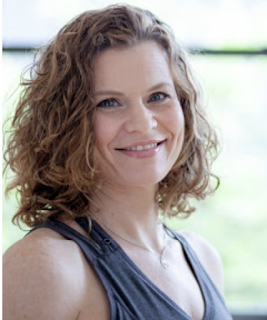by Bridget
Do you have a home practice? I remember feeling daunted by the prospect of creating my own home practice. It seemed like such an enormous undertaking. The way I started was by just remembering a pose or two, or a short sequence of poses that my teacher had taught in class that week, and repeating them on my mat when I got home. Even if I only practiced for 10 minutes, it was getting me going on the right path. When I began the Advanced Studies Program (the teacher training program at The Yoga Room Berkeley) the whole first year was dedicated to our own personal practice, and we were required to practice daily, so with that kind of structure I found my way to a regular personal practice.
If you have been wanting to create your own home practice, but haven’t quite found your way there yet, I have good news! Barrie Risman has created this amazing Guide to Home Yoga Practice. In it she talks about 5 excellent reasons for creating your own practice, as well as common challenges to maintaining your home practice. She lays out an outline of how to structure your practice, and gives some practical tips for actually making it happen on a regular basis. Best of all, she includes 10 practice sequences to get you started.

Download Barrie’s free Guide to Home Yoga Practice.

Barrie Risman is known for her ability to convey the essence of the wisdom teachings of yoga with exceptional clarity, insight, and relevance to students of all levels and from all walks of life. As unpretentious and down-to-earth as she is wise and inspiring, Barrie teaches with a remarkable combination of rigor and challenge balanced with sensitivity, humor, and compassion.
Her events weave together the technical precision of refined alignment-based practice with an ever-present awareness of the great wisdom of yoga philosophy distilled from decades of intensive study and practice.
Teaching for more than two decades, Barrie shares the depth of her experience and knowledge to reveal a uniquely accessible, authentic and integrated approach to yoga. She empowers students with tools to deepen their understanding and inspires them to embrace asana as a path for expansive self-discovery and inner growth. Download Barrie’s free Guide to Home Yoga Practice right here. Learn more about her book Evolving Your Yoga: Ten Principles for Enlightened Practice and her online classes at www.barrierisman.com.
Follow Yoga for Healthy Aging on Facebook ° To order Yoga for Healthy Aging: A Guide to Lifelong Well-Being, go to Amazon, Shambhala, Indie Bound or your local bookstore.


Thank you very much for the gift.
Please allow one point of critique: It is impressive that all yoga practitioners always state you don't need to be flexible to do yoga, but at the same time constantly show people twisting themselves into impossible pretzels. Some instructions for approximations for those with more limited motion range would be super useful.
Stay safe and have a beautiful day
Claudia Wulz
Hello Claudia,
You're welcome! Thanks for your comment. I hear you, us yoga teachers can sometimes contradict ourselves that way. And, yes, I wholeheartedly agree with the sentiment that you don't need to be flexible to do yoga.
If I might, I'd like to respond to your request for instructions and alternatives for those with more limited range of motion. I, like many other teachers I know, truly love teaching students of all levels and physical abilities. In my classes (both live and online) I offer stages of poses, alternatives, modifications, and prop variations in order to accommodate and serve students of all levels and abilities.
However, the intention of this particular guide was to offer practitioners motivation, ideas, and tips to structure your at-home personal practice. The sequences at the end are not intended to "teach" you yoga, they are there simply to give you some ideas for practice sequences if they are appropriate.
This is why there are no pose instructions or modifications included. That being said, depending on your physical capacity you might find the restorative sequence or the standing pose-based sequences more accessible than some of the others.
Wishing you all the best!
Warm regards,
Barrie